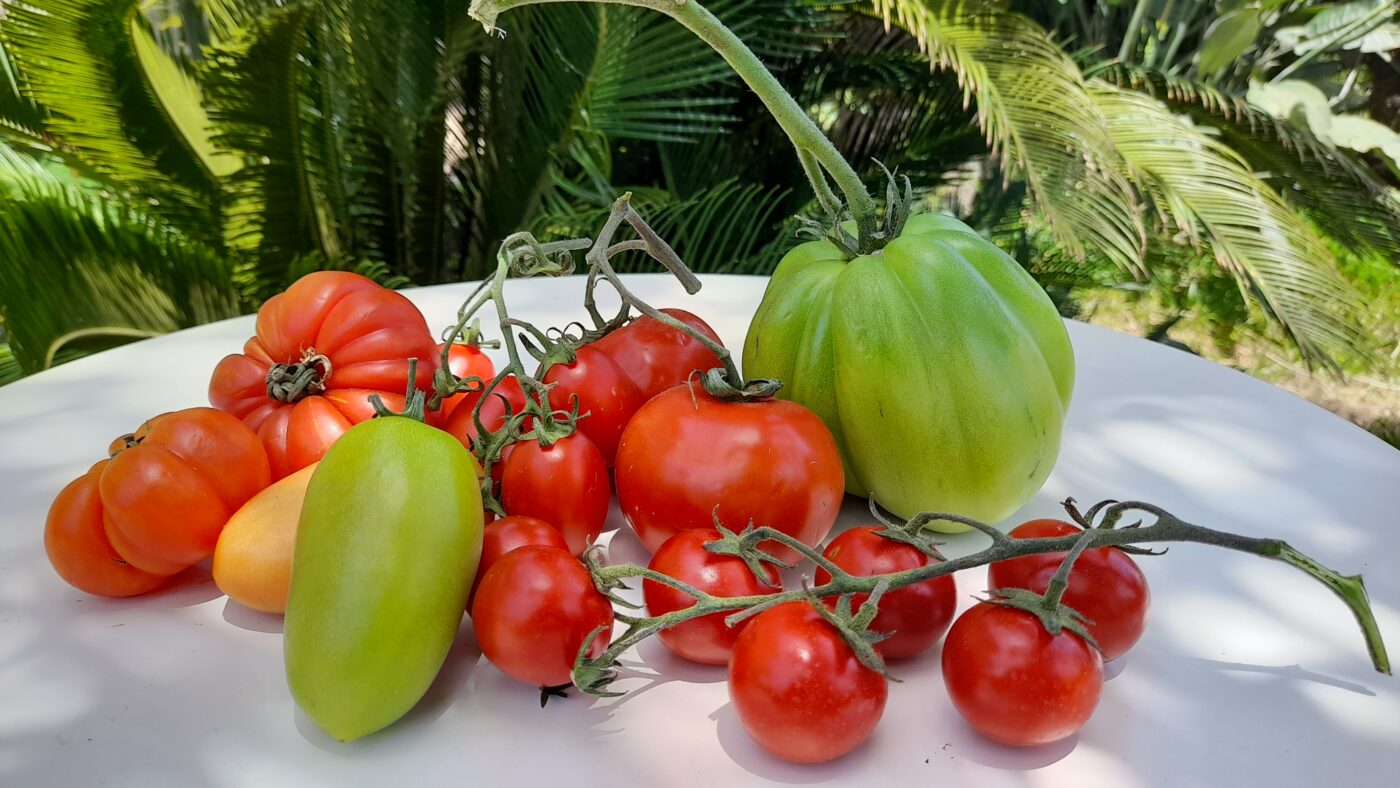Food
How to eat tomatoes like a real Italian

When you are shopping at an Italian grocery, have you ever got confused with the many varieties of tomatoes? If yes, read this before choosing your tomatoes. Yes, Italians are very particular on tomatoes, as on food in general. Here I am going to tell you about the Italian way of tomatoes.
The ‘Red’ on Italian flag is tomato
Tomato is one of the most important ingredients in the Italian kitchen. How important is it? Just look at the colours of the Italian flag- green for basilico (basil), white as formaggio (cheese) and red like pomodoro (tomato). A famous dish-caprese with basil, mozzarella and tomato is one of the patriotic dishes.
A bit of history
In the beginning, when tomatoes were brought to Europe in the 16th century, the first reaction of the people was refusal. They considered these small round berries, belonging to the solanaceae family, poisonous. Yet, tomatoes were sought for ornamental purposes among aristocrats. Not until the late 17th century, people began to eat tomatoes. Over hundred years, different tomato varieties were created, either naturally or by cross-breeding in the soil of Italy. This process helped spread tomatoes throughout Italy for important uses as dried tomatoes, pizza tomatoes, sauce tomatoes and all storage tomatoes.
The Sicilian kitchen
Now we know tomato has been in the most signature dishes in Italian cuisine, but do you know Sicilians are quite hard core about their passata (tomato sauce)? Traditionally, Sicilians are making passata for the whole family in their backyard or in the garage every summer. You may wonder why not in the kitchen? Well, it is an operation too elaborate and the passata is for the whole year long. After a whole day of passata-making, the mamma is finally satisfied with the stash of passata for the whole family all year round. With such a credential, from whom we can learn a better lesson about tomatoes?
Here are the rules
Italians are very particular about the use of ingredients. After living in Sicily for 6 years, I have learned the Sicilian way. There are 5 main ways of eating tomatoes in Sicily- insalata (salad), passata (tomato puree), salsa fresca (fresh sauce), panino (sandwich) and spuntino (snacks).
1. Insalata & Bruschetta
On summery days, having insalata di pomodoro (tomato salad) gives you the best appetite. For making an insalata, nothing is more satisfying than using Cuore di bue and riccio since they are pulpy, soft, juicy and sweet. The simple authentic Sicilian way is just to cut the tomatoes in big wedges, lavish on salt to let the tomato juice release, be extra generous with olive oil, oregano and add a clove of chopped garlic or stripped fresh red onion. You can have this insalata every day during summer. If you want to be through and complete the “ green-white-red flag” you also add one or two mozzarellas..
If you want to make bruschetta, tomato salad on toasted Italian bread. You just have to cut the tomatoes into smaller pieces. Yes, size matters. Wanna make it complete? Add some cheese/mozzarella. The rule does not change.
2. Passata
As I have explained, making passata is something sacred in Sicily. No pasta, no meal. Of course, it stays for the whole year in the Sicilian kitchen until the next season. Who dares to mess up? Since the Sicilians are very particular on ingredients, let’s talk about tomatoes.
The general rule is all tomatoes are good for making passata but traditionally San marzano or Tomato (allungato) and Tomato (grappolo) are preferred for making passata. These types of tomatoes are less seeds and more pulpy which give a velvety passata. However, the current trend in the market is “passata di ciliegino” (cherry passata) for its taste, potentially sweeter. For a home-made recipe, we stick with the tradition. Once the passata is made, many recipes will call for this stash all year round.
3. Salsa fresca
Salsa fresca is another way to cook the tomato. It is simpler and quicker. Still, tomato allungato like San marzano is preferred since it has less juice than the other tomato which makes it easier to manage the moisture of the pasta. But there is another recipe which calls for cherry tomatoes ciliegino, Pasta alla carrettiera. Alla carrettiera means on the cart, just the name tells you ‘What a rush!’ we are in. It is a perfect recipe for people who are in a rush to enjoy a nice dish of tomato pasta.
4. Spuntino
Spuntino means snack in Italian. It does not have to be raw but it has to be quick and fit for bites. Tomato ciliegino, datterino or even pixel/ piccadilly are fit for this. You may dress it quickly with olive oil, oregano and salt, grate a bit of parmesan cheese, and have it on a cracker. Or, cut the cherry tomatoes and grill them with olive oil and serve it with cheese and bread or dip them into mayonnaise or soft cheese.
5. Panino
Panino is another iconic term in Italy. Literally, it is a sandwich in Italian but not all sandwiches are panini. Yes, panino is small bread like focaccia and ciabatta, not just any 2 sliced bread. Also, panino is grilled on the outside. Now, it is clear what amounts to a panino and what does not. We can move on to the ingredients. The tomato used for panino is usually tondo liscio, the smooth round one because it matches with the shape of cut mozzarella. Yes, the shape matters.
You can see clearly from Insalata Caprese – basil, mozzarella and tomato.
Now you know the 5 general uses of tomatoes in Italy. It is time to buy some tomatoes and enjoy them in the Italian way, or even Sicilian way.
Buon appetito!
